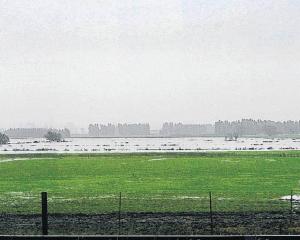
The trees, which had surrounded a picturesque walkway near the West Belt entrance to the park in Rangiora, were felled by Environment Canterbury (ECan) last week during the completion of work to protect Rangiora and Kaiapoi from the threat of river flooding.
However, park users say the affected area was a special part of the park, used by many to walk, run, cycle, exercise their dogs, and just relax. Because of this, the community should have been consulted before the decision was made to remove the trees.
Alison Clay, a regular visitor to the park with her dog, Jafa, says she is saddened to see the “beautiful walkway massacred”.
“For what? How does it stop flooding?”
Cyclist Bernadette Canavan, who is another regular park visitor with her dog, Nugget, was also disappointed that so many trees had been felled.
“I felt very saddened when I saw the trees. This was my favourite place to ride my bike and now all that beauty has been destroyed.”
ECan regional lead in river engineering Shaun McCracken says the felled trees were between the primary and secondary stopbanks. “In the event of a breach of the primary stopbank, the flood flow is channelled back into the river by the secondary bank.
“The problem with trees in this particular area is that they slow the water down and restrict its passage through this critical zone and back into the river downstream of the rail bridge.
“Modelling of flood flows through this area indicated that, with the trees in place, overflows into Rangiora were likely.
“This is a risk we are unwilling to accept.”
However, a Ministry for the Environment report published in 2008 concluded that “flood damage during major New Zealand floods is rarely caused by floods exceeding design protection levels on stopbanks on rivers”.
“It is more often caused by unpredictable breaches of a weak point in a stopbank when the river is below bank-full stage; or overflow of backed-up tributaries on to land behind stopbanks when the river is close to bank-full; or spillage across floodways .”
It states: “These risks do not change even when afforestation is factored in.”














